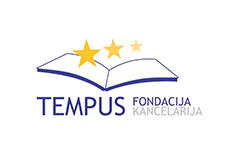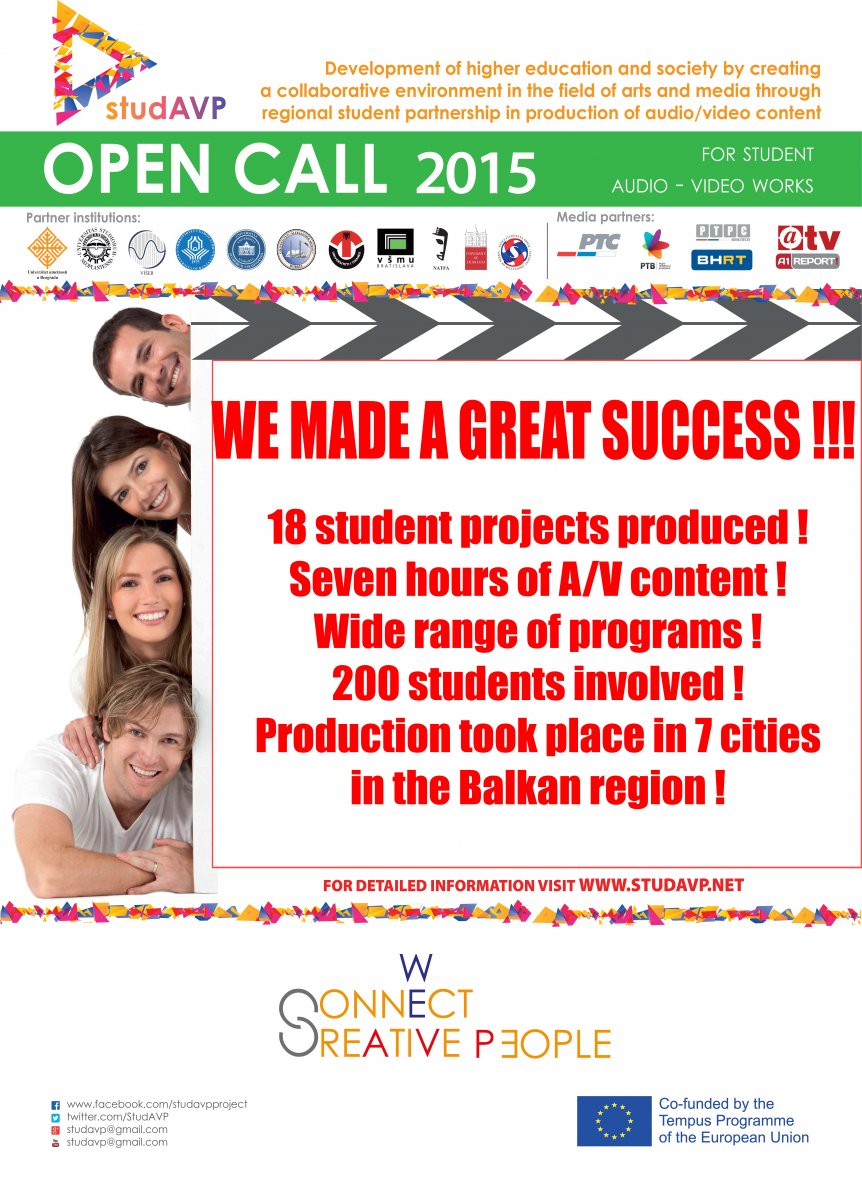Project description
This project was primarily aimed towards students of Audio/Video art and media studies and their need to participate in a professional production and also to present their work to the public.
The project was designed in a way to improve their educational process and to connect them to the professional media environment, mainly television and radio. By creating specific synergy between media corporations and educational institutions we planned to establish new ways of communication and possibilities for students and alumni to learn and gain more practical experience and to present themselves to media corporations as potential future employers. The project was consistent with the Europe 2020 strategy, the Strategic Framework for European Cooperation in Education and Training and the Bologna process.
During the first year of project implementation students from partner country (PC) art and media schools produced audio/video works based on the conditions of the announced Open Call. Student production teams were created from two different PC institutions working in cooperation on one project. Student mobility was planed according to the accepted projects. It was planned to produce up to 15 student works and to have 150 students involved.
From the very beginning of the project we started working on the development of a broadband Internet portal – unique central point to all students from our schools. The Internet portal was capable of distributing high definition audio video content among other relevant information, links, databases, etc.
In the second year of the project, our non-academic media partners defined specific topics for the second Open Call for projects, according to their program needs. Media partners were asked to include students in ‘real’ production. Students were demanded to act, create and behave like radio and TV professionals. They learned through practice gaining valuable experience. Student mobility was planned according to the accepted projects. It was planned to produce up to 15 student works and to have 150 students involved.
Further development of the Internet portal Stud AVP was planned and new features were introduced, like On-line mentorship program – an innovative, democratic way for students to choose and decide upon mentors of their works.
Finished student works were broadcasted over public radio television stations and through the Internet portal. DVD’s were produced and applications for various festivals were submitted.
The third year’s main objective was to fully establish and develop a long lasting platform for cooperation between students and media enterprises in the region and to develop independent student Internet radio and television broadcasting. It was expected to support 20 student works and to have 300 students involved.
Also, our attention was focused on a new form of education – creating a “virtual university” for audio video art and media! Having that in mind, the third Open Call for student projects was free of any conditions. Students from Europe related schools were welcome to join and present their own works. Student works were broadcasted and published mainly but not exclusively on the Internet student radio and television.
The plan was to have at least 400 students involved and 60 AV works produced during the three years of implementation of the StudAVP project.




